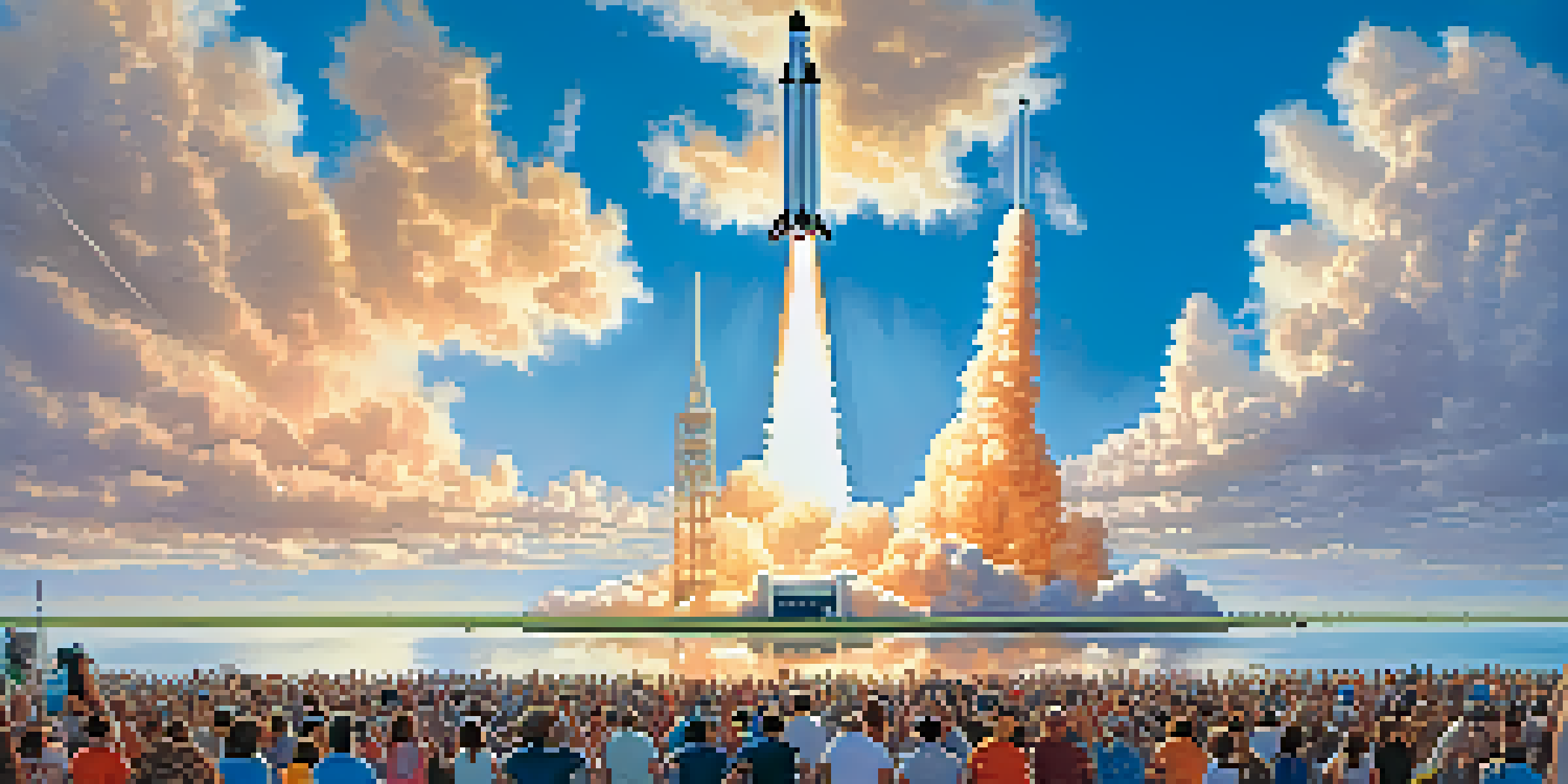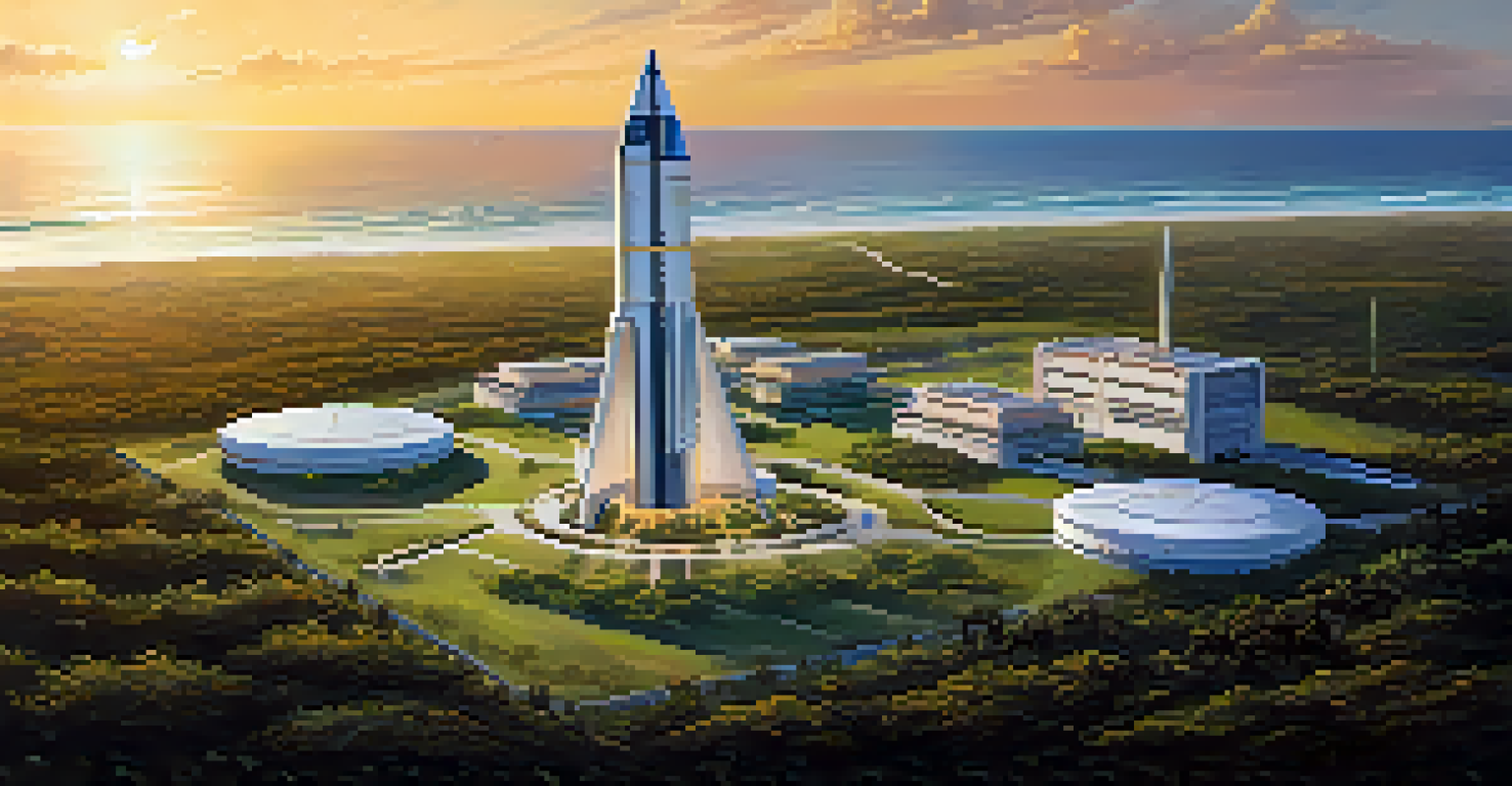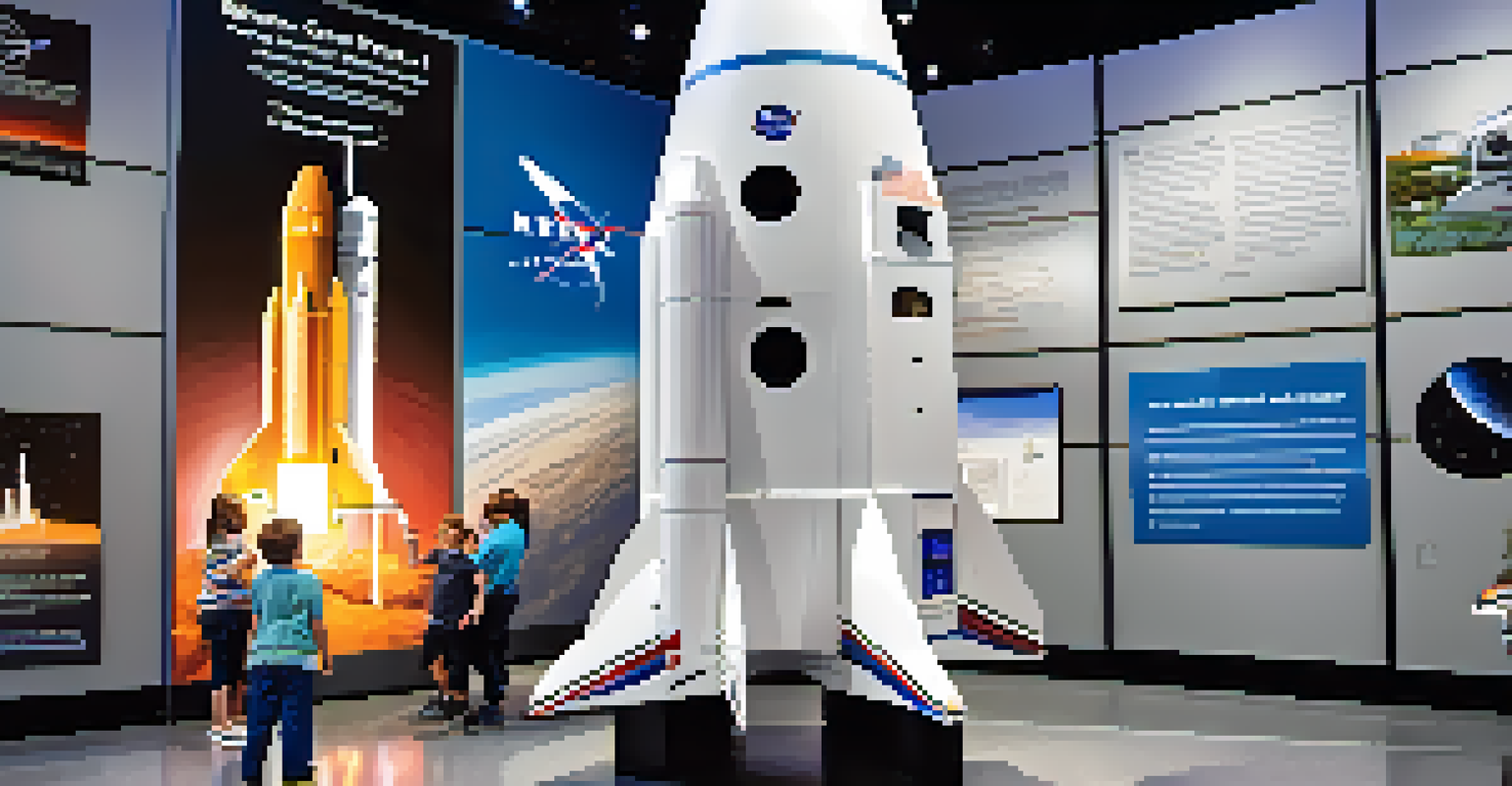Florida's Launch Sites: Key Locations for Space Exploration

The Importance of Florida in Space Exploration
Florida has long been a pivotal player in space exploration, hosting some of the most iconic launches in history. Its unique geographical advantages, such as proximity to the equator, allow rockets to take advantage of the Earth's rotation, providing extra lift. This strategic location has attracted both government and private space agencies, making it a hub for innovation and technological advancement.
The Earth is the cradle of humanity, but mankind cannot stay in the cradle forever.
The state's clear skies and favorable weather conditions further enhance its appeal, resulting in fewer launch delays due to adverse weather. Imagine planning an exciting trip to see a rocket launch, only to find out it was postponed due to rain—Florida minimizes this risk. As a result, thousands of visitors flock to the state each year, eager to witness the awe-inspiring power of space travel.
From historic missions to groundbreaking innovations, Florida's contribution to space exploration is immeasurable. The synergy between the state's natural advantages and the ambition of its agencies creates an environment where dreams of reaching the stars can become reality.
Kennedy Space Center: The Heart of Space Launches
Kennedy Space Center (KSC) is perhaps the most famous launch site in Florida, known worldwide for its role in NASA's space missions. Located on Merritt Island, KSC has been the launch point for every American human spaceflight since 1968, including the Apollo and Space Shuttle programs. Its iconic launch pads are a testament to decades of exploration and scientific achievement.

Visitors to KSC can explore its Visitor Complex, where they can learn about the history of space travel and even see a rocket up close. The sheer scale of the rockets, combined with the knowledgeable staff, creates a thrilling experience for space enthusiasts of all ages. It's like stepping into a real-life science fiction story, where the boundaries of human capability are pushed every day.
Florida: A Space Launch Hub
Florida's unique geographical advantages and favorable weather conditions make it a prime location for space exploration, attracting both government and private agencies.
As KSC continues to evolve, it remains a beacon of inspiration, hosting cutting-edge missions from both NASA and private companies. The center not only represents the past of space exploration but also serves as a launchpad for the future, paving the way for missions to Mars and beyond.
Cape Canaveral Space Force Station: A Legacy of Launches
Just a stone's throw from Kennedy Space Center lies Cape Canaveral Space Force Station (CCSFS), a site rich in history and achievements. Originally established as a military launch site, it has transformed into a crucial location for both government and commercial launches. The station has witnessed numerous historic moments, including the first American satellite launch and the first crewed Apollo mission.
To confine our attention to terrestrial matters would be to limit the human spirit.
One of the standout features of CCSFS is its diverse range of launch vehicles, from Atlas and Delta rockets to the latest SpaceX Falcon launches. This variety showcases the evolution of space technology and the growing role of private companies in space exploration. It's fascinating to think about how far we've come since the early days of rocketry, with a plethora of options now available for sending payloads into orbit.
CCSFS continues to play a vital role in national security and scientific research. As it adapts to the changing landscape of space exploration, the station remains a key player, supporting missions that will shape the future of our understanding of the universe.
SpaceX's Launch Complex 39A: A New Era of Exploration
Launch Complex 39A at Kennedy Space Center has become synonymous with SpaceX’s ambitious missions, marking a new era in space exploration. After being leased by SpaceX in 2014, this historic pad has been retrofitted to support modern rocket launches, including the Falcon 9 and Falcon Heavy. Its rich history, combined with innovative technology, makes it a focal point for space enthusiasts.
The first commercial crewed flight, Crew Dragon Demo-2, launched from this site, marking a significant milestone in space travel. This mission not only demonstrated SpaceX's capabilities but also revitalized interest in human spaceflight, showcasing the power of public-private partnerships in the space industry. It’s like watching the next generation of explorers take their first steps into the unknown.
Kennedy Space Center's Legacy
Kennedy Space Center serves as the heart of American human spaceflight, hosting iconic missions and inspiring future explorations.
As SpaceX continues to push boundaries with ambitious projects like Starship, Launch Complex 39A is set to play a central role in humanity's journey to Mars and beyond. The site represents not just a physical location, but a symbol of hope and innovation for future generations.
The Role of Cape Canaveral in Commercial Launches
In recent years, Cape Canaveral has emerged as a key player in commercial space launches, with various private companies setting up operations in the area. This shift reflects the growing trend of privatization in space exploration, where companies like SpaceX, Blue Origin, and ULA lead the way. By offering launch services to a range of customers, these companies are democratizing access to space.
The launch of multiple satellites and payloads from Cape Canaveral highlights the station's versatility and adaptability to different mission profiles. Whether it's deploying satellites for global communications or advancing scientific research, Cape Canaveral is proving to be a reliable partner for commercial endeavors. It’s akin to a bustling marketplace, where innovation is nurtured, and ideas take flight.
As the commercial space industry continues to grow, Cape Canaveral is poised to remain at the forefront, attracting new players and expanding its capabilities. This vibrant ecosystem is not just about launching rockets; it's about creating opportunities for collaboration and pushing the boundaries of what is possible in space.
The Future of Space Exploration in Florida
Looking ahead, Florida's launch sites are set to play an even more significant role in the future of space exploration. With ambitious missions planned for the Moon, Mars, and beyond, the state is gearing up for a new wave of exploration that will captivate the world. The Artemis program, which aims to return humans to the Moon, will utilize Florida’s launch infrastructure, showcasing the state's ongoing relevance.
As technology advances, Florida's launch sites are evolving to accommodate more frequent and diverse launches. Innovations such as reusable rockets and advanced satellite technologies are reshaping the industry, making space more accessible and affordable. It’s like entering a new chapter in a thrilling novel, where each page turns with exciting developments and discoveries.
Commercial Space Growth in Florida
Cape Canaveral is becoming a key player in the commercial space industry, supporting a variety of private companies and missions that democratize access to space.
Florida's commitment to education and workforce development also ensures a bright future for the space industry. By fostering a new generation of engineers, scientists, and innovators, the state is not only preparing for the next frontier but also inspiring future explorers to dream big. Together, these elements create a dynamic environment where the possibilities in space exploration are endless.
Visitor Experience: Engaging with Florida's Space Heritage
Florida's launch sites are not just for professionals; they offer incredible experiences for visitors of all ages. The Kennedy Space Center Visitor Complex, for instance, provides interactive exhibits, astronaut encounters, and the chance to see rockets up close. It’s a family-friendly destination where curiosity and education go hand in hand, making it an unforgettable journey into the world of space exploration.
Many visitors schedule their trips around launch windows, hoping to witness the breathtaking spectacle of a rocket taking off. The excitement in the air is palpable, and the countdown builds a sense of community among spectators. It’s as if everyone shares a collective breath, waiting for that moment when the rocket defies gravity and ventures into the cosmos.

By engaging with Florida's space heritage, visitors not only learn about the past but also become part of the ongoing story of exploration. Each launch represents a step forward for humanity, and being there to witness it creates lasting memories and inspires future generations to reach for the stars.
Conclusion: Florida's Launch Sites as a Gateway to the Stars
Florida's launch sites embody the spirit of exploration, innovation, and collaboration that defines space travel today. From Kennedy Space Center to Cape Canaveral, these locations have not only shaped the history of space exploration but continue to influence its future. The synergy between government initiatives and commercial ventures creates a thriving ecosystem that pushes the boundaries of what is possible.
As we look to the future, Florida remains a beacon of hope for aspiring astronauts, engineers, and dreamers everywhere. The state's commitment to fostering a vibrant space industry ensures that the legacy of exploration will thrive for generations to come. It’s like standing on the precipice of a new frontier, where each launch is a step closer to understanding our universe.
In essence, Florida's launch sites are not just physical locations; they are gateways to the stars, inviting all of us to be part of this incredible journey. So whether you’re a seasoned space enthusiast or a curious newcomer, there’s no better time to explore the wonders of space exploration in the Sunshine State.